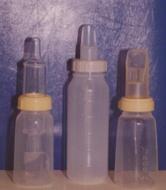Introduction
Cleft lip and cleft palate are birth defects that form when tissues in the mouth or lip do not form properly during fetal development. Both defects are treatable and should be managed early. In Malaysia, clefts occur in every 700 birth.
Causes
Doctors don’t know exactly why clefts develop but they believe that it may be a combination of genetic (inherited) and environmental factors (such as drugs, illnesses and the use of alcohol or tobacco during pregnancy).
Complications
Children with oral clefts are more susceptible to colds, hearing loss and speech defects.
Dental problems such as missing, extra, malformed, displaced teeth and caries are common in children with cleft palate.
The alveolus is the bony part of the gums that contain the developing teeth. Defects or clefts in the alveolus can result in teeth failing to erupt or appear into the mouth. It can also cause teeth to be displaced, tipped or rotated.
In the newborn feeding can be a problem. This can lead to poor weight gain and hinders early surgical repair of the lip..
How Should You Feed Your Child?
Breast feeding has the best advantage and therefore is desirable and should be encouraged (Shaw et al, 1999). The baby will feel more comfortable during feeding in an upright position. If this is unsuccessful, bottle feeding (especially using expressed breast milk) may be the most appropriate approach.
If the affected child is experiencing problems with feeding your doctor or pediatric dentist may be able to suggest other feeding aids such as
- Using a compressible bottle with a long teat
- Putting baby in an upright position while feeding to minimize nasal regurgitation.
- Using specialized feeding plates for infants with bilateral complete clefts

Bottles with different types of teat for cleft lip and palate babies.
Dental Care
Dental care begins at birth. The pediatric dentist advises mother on feeding techniques and oral hygiene care of babies with clefts. A child with oral clefts generally needs the same dental care as other children. Early visit to the dentist is encouraged. Suggested age is 6 months.
Treatment
Patients with clefts of the lip and palate commonly need extensive and specialized treatment provided by a multidisciplinary team of specialists including plastic surgeon, orthodontist, pediatric dentist, speech therapist, maxillofacial surgeon, ENT surgeon, psychologists and others.
Management begins at birth with counseling of the parents to reassure them, explain the likely course of events and to give practical advice on feeding. Once the child is feeding well, and is progressively gaining weight, he or she should be able to cope with the primary surgery.
The lip is repaired within the first few weeks or months of life, followed later by closure of the palate. In Malaysia the majority of repairs are done by the plastic surgeon.
The ridge defect can be fixed by grafting bone matter onto the alveolus. This then allows the position of teeth to be corrected orthodontically . The treatment often begins during the mixed dentition stage, at about 7½ to 9 years, with or without the expansion of the upper jaw in preparation for a bone graft into the ridge defect at about the age of 9 years or earlier.
Further orthodontic treatment, normally with fixed appliance, is needed when the permanent dentition has erupted.
In about 25% of children with a unilateral cleft lip and palate growth in the upper jaw does not keep up with that of the lower jaw growth. If this occurs, your child may need surgery to align the teeth and help the upper jaw to develop.
Finally, restorative treatment may be needed because of missing teeth or other defects, and to provide permanent retention for orthodontic tooth movement.
Improving Treatment Outcome
It is obvious that the success of all this treatment depends on the maintenance of a sound dentition over many years. Loss of teeth due to caries greatly complicates and hinders treatment. Children with clefts have significantly more dental disease, all of which are preventable.
The child should visit the dentist at 6 monthly intervals for preventive care, dietary advice, oral hygiene technique follow-up and restorative care if necessary.
Maintenance
Regular dental check-up at any Pediatric Dental Clinic in Hospitals and oral self care at home.
Support Groups
Help, moral support and counseling are available from the parents-support group ( CLAPAM )
CLAPAM is short for Cleft Lip and Palate Association of Malaysia. They are voluntary group of parents and professionals (such as plastic surgeons, dental specialists and speech therapists) who have some personal or professional involvement with children born with a cleft lip and palate. They aim to help the children with this birth defect grow up looking better, speaking and fitting in better.
For more details, write to CLAPAM at :
CLAPAM (Co. No. 5371/93)
#121, Lot 4-46A, 4th Floor,
Wisma Central, Jalan Ampang,
50450 Kuala Lumpur.
Tel/Fax : 03-21621445
E-mail : clapam@streamyx.com
| Last reviewed | : | 20 April 2012 |
| Writer | : | Dr. Laila bt. Abd Jalil |
| Accreditor | : | Dr. Ganasalingam a/l Sockalingam |







